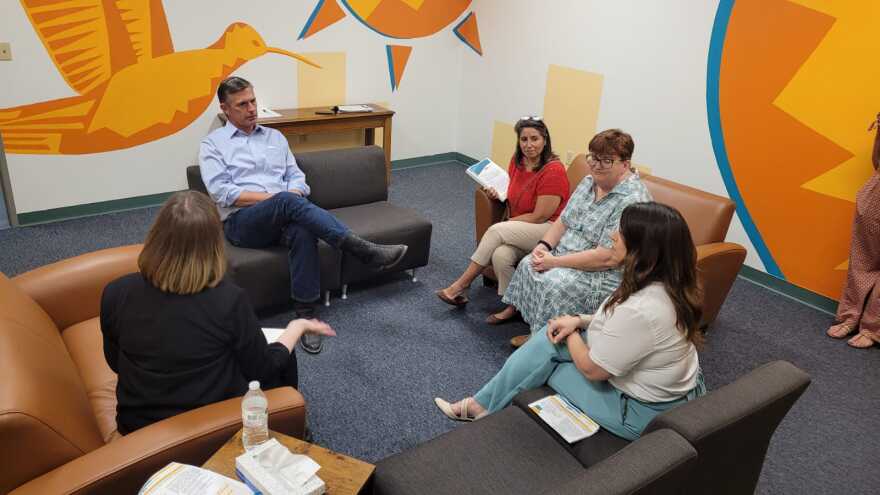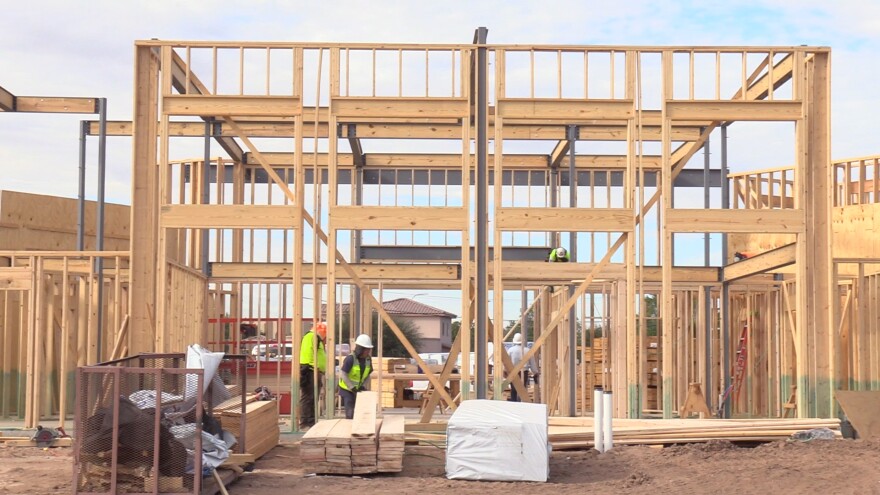As New Mexico's housing crisis deepens, instances of homelessness continue to rise. This was the reality for Janielle Kaneakua. She left her home state of Hawaii for New Mexico in 2020, but was unable to secure stable housing as the Coronavirus Pandemic swept across the world. That is, until she learned about the Mesilla Valley Community of Hope from a caseworker.
“We were waiting at a park. And some guy came, and he told us about the Community of Hope, and how good everybody was there. So every day I would call because there was a waiting list to get into tent city,” she said. “So we moved into Tent City. The dog was happy. They gave us sleeping bags. It was a smooth transition from the park to the tents.”
According to the latest data collected by the New Mexico Coalition to End Homelessness’ point in time count, individuals experiencing homelessness in January of 2024 was 4,649, up from 2023’s 3,842, an increase of roughly 21%.
Kaneakua said she lived at Camp Hope for a full year, utilizing the facilities and working with counselors until a space became free for her at the Desert Hope Apartments.
“It was a joy when they told us they were moving us in, I didn’t expect to move into an apartment,” she said. “[I have] more confidence to go out and get a job, to be out in public. Hats off to Community of Hope.”
The need for affordable housing in the U.S. is on the rise, and in New Mexico, since 2017, rent has skyrocketed 70 percent according to a report from the state’s legislative finance committee.
Like many other municipalities across the nation, the City of Las Cruces is trying to keep up with the demand, and this year, broke ground on two affordable housing projects. Intended for senior and family housing, there will be 150 new units available by the time that construction is complete, but that’s just a drop in the bucket for the shortage of 5,600 rental units that the city identified, according to Natalie Green, the city’s Housing and Neighborhood Services Administrator.
“We have about 900 units coming online in the next couple of years. So the city’s actively working to build capacity,” Green said. “In addition to that, we have some great policy initiatives, like Realize Las Cruces, that will help increase accessory dwelling units and single-family neighborhoods so people can build a casita to help support those multigenerational households that I think are going to become more prevalent as the housing crisis exacerbates.”

Green said that the city has built good relationships with developers and is confident that Las Cruces is an attractive place for them to construct affordable housing units, but said that finding where to put new complexes can be tricky.
“Our challenge is going to be finding places to build housing that match up with the New Mexico Mortgage Finance Authority’s scoring criteria,” Green said. “A lot of times they prioritize these neighborhoods that are concentrated with lower incomes, and the city wants to see more diversity across our neighborhoods, so we want to make sure that we’re building in different parts of town. So we’ll continue to reach out with various developers and plan projects through the pipeline.”
Beyond city and state, New Mexico’s federal designation is also looking for ways to ease the cost of housing for its residents. On a recent visit to southern New Mexico, U.S. Senator Martin Heinrich said that he’s in favor of legislation that would incentivize more developers to build more low and moderate-income housing, as well as tax credits that could help make housing more attainable for first time buyers.
“We’ve really struggled with housing, we were building a lot of housing in the early 2000s, and when the recession hit in 2008 and 2009, we lost a lot of the private sector builders who had been doing that work in New Mexico for decades. We have to rebuild that. we have to have the local capacity to be able to build houses at a clip that will actually reduce the price pressures that we’re under.”

As housing instability persists through the state, the efforts of communities like Las Cruces to provide affordable housing are becoming more urgent. With a shortage of thousands of units driving rising costs, the road to stability for many remains a major challenge for local, state and federal officials to tackle.



